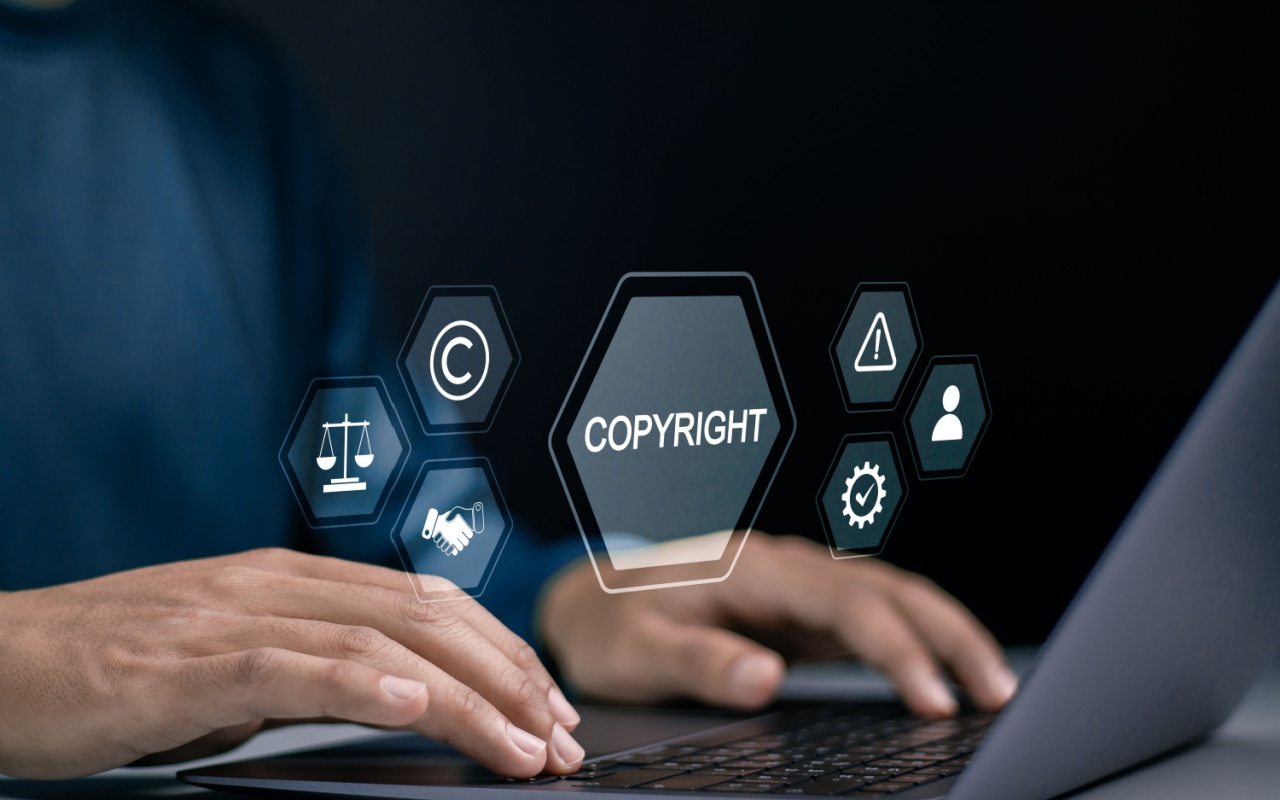
Intellectual property – Complete guide for entrepreneurs and employees
In today’s dynamic business world, intellectual property (IP) is an essential pillar. It encompasses all creations of the human mind, from inventions and literary works to symbols, designs and trade names. Whether you are an entrepreneur or a professional in a company, a deep understanding of the concept of IP is an indispensable skill.
In the era of accelerated digitalization, protecting intellectual property has become more complex than ever. The rapid flow of information and technological progress test the ability to defend your innovations and creations. However, with an effective strategy, IP can become not only a means of protection, but also a valuable source of revenue and a significant competitive advantage.
Imagine intellectual property as the solid foundation of your business in the digital landscape. Without adequate protection measures, the risk of your ideas being copied or exploited by others increases exponentially. In a context dominated by cyber threats and fierce competition, being informed and prepared about intellectual property management is not only necessary, but also crucial for long-term success.
Types of Intellectual Property Rights
To successfully navigate the complexity of intellectual property (IP), it is essential to understand the main categories of rights you can obtain and protect. Here is a detailed overview, adapted for the B2B business context:
Copyrights
These protect original creations in fields such as literature, art and science. In the B2B environment, copyrights can cover software developed by your company, marketing materials, training content or databases. Protection arises automatically at the time of creation and extends for the lifetime of the author, plus 70 years after death. Copyright not only protects your creations, but also gives you a competitive advantage, highlighting the uniqueness of your activities.

Photo source: Shutterstock.com
Patents
If you work in fields such as technology or engineering, patents are indispensable. They provide protection for new inventions with industrial applicability. For example, unique production processes or innovative technological solutions can be protected by a patent, ensuring your exclusivity for a period of up to 20 years. Thus, you not only secure your innovations, but also increase the value of your company in the market.
Trademarks
They represent the foundation of your brand identity. Trademarks protect the elements that make your products and services unique: your company name, logo, slogans or brand colors. In B2B, where trust and reputation are essential, trademarks are a valuable strategic asset. Their protection can be renewed indefinitely, ensuring the continuity and long-term recognition of your business.
Trade secrets
They protect confidential information that gives you a competitive advantage: chemical formulas, production processes, customer lists or business strategies. Unlike other forms of IP, trade secrets do not require registration. However, it is essential to implement rigorous measures to maintain the confidentiality of this information, so that you benefit from legal protection.
Understanding these categories and applying them strategically will allow you to protect your intellectual assets, strengthen your market position, and maximize your business potential.
International Law and Regulations on Intellectual Property Protection in a Cyber Context
In a digitalized era, intellectual property (IP) protection is regulated internationally through treaties and conventions such as the TRIPS Agreement (Trade-Related Aspects of Intellectual Property Rights), administered by the World Trade Organization (WTO). It establishes minimum standards for the protection of IP, including copyright, patents, and trademarks, applicable in the online environment.
Organizations such as the World Intellectual Property Organization (WIPO) have also developed frameworks that encourage member states to adopt appropriate measures to prevent and combat digital piracy and IP theft. In the European Union, the Directive on Security of Network and Information Systems (NIS2) requires member states to improve cybersecurity, which indirectly contributes to protecting IP. Legislation must constantly evolve to keep pace with emerging technologies and increasingly sophisticated tactics of attackers.
Protection of Intellectual Property in Romania
As an entrepreneur or manager in a company, you need to be aware of the local legal framework for the protection of intellectual property. It is aligned with European and international standards, providing you with a solid basis for protecting your innovations.
The State Office for Inventions and Trademarks (OSIM) is the main institution responsible for the registration and protection of industrial property rights. Here you can register patents, trademarks and industrial designs. For copyright, turn to the Romanian Copyright Office (ORDA).
Romanian intellectual property legislation includes specific laws for patents, trademarks, copyrights and combating unfair competition. It is important to familiarize yourself with these laws in order to effectively protect your business. In addition, Romania is a signatory to the main international conventions in the field, ensuring you have harmonized protection at a global level.
Infringement of intellectual property rights in the digital age
In today’s digital world, the risks related to infringement of intellectual property have multiplied. Digital piracy, for example, can lead to the unauthorized copying and distribution of your software or protected digital content.

Photo source: Shutterstock.com
Hacking and data theft are another major threat. Think about the impact of unauthorized access to your trade secrets or confidential customer information. Online counterfeiting can seriously damage your brand’s reputation, while cybersquatting can lead to loss of control over your online presence.
The impact of these breaches can be devastating to your business. It’s not just about immediate financial losses, but also about long-term damage to your reputation and the loss of the competitive advantage you’ve worked so hard to build. Cyber insurance can be an effective solution to protect your digital assets and minimize the risks associated with intellectual property infringements online.
A crucial aspect in combating cyber risks is the collaboration between companies, insurers and authorities. Companies must adopt robust cybersecurity protocols and share information about detected threats. Insurers play a vital role by offering cyber insurance policies, which cover financial losses and costs associated with IP breaches. At the same time, authorities, such as national cybersecurity agencies, facilitate the exchange of information between entities and provide support in investigating attacks. Public-private initiatives, such as cybersecurity alliances, contribute to the development of common strategies for risk reduction, the creation of clear legal frameworks and the promotion of international standards of protection. This integrated collaboration is essential to address the complexity of cyber threats and to effectively protect intellectual property assets.
The role of IT insurance in intellectual property protection
In the face of these digital risks, IT insurance has become an essential tool for the protection of intellectual property. Think of them as a financial safety net for your intangible assets. These policies can cover legal costs associated with intellectual property litigation, compensation for financial losses caused by breaches, expenses for recovering compromised data, and investigation costs in the event of cybersecurity incidents.
As an entrepreneur or manager in a company, you should integrate such insurance into your risk management strategy. It is not just an expense, but an investment in the protection and continuity of your business in the digital age. IT Professional Liability Insurance can provide additional protection, covering the specific risks associated with providing IT services and products, including those related to intellectual property.
Intellectual Property Management Strategies for Companies
To effectively protect your intellectual property in the digital environment, here are some key strategies you can implement:
- Start with a complete intellectual property audit. Periodically conduct an inventory of all your company’s IP assets. This will help you identify what needs to be protected and how.
- Invest in robust cybersecurity. Implement advanced IT security solutions, including firewalls, intrusion detection systems, and data encryption. Your digital security is just as important as your physical security.
- Develop clear internal privacy policies. Make sure all employees understand the importance of protecting confidential information and intellectual property. Organize regular training sessions to educate them on cybersecurity best practices.


Source of photo: Shutterstock.com
- Constantly monitor the market for potential violations of your IP rights. In the online environment, speed of reaction is crucial. The faster you detect a violation, the more effective you can act.
- Use non-disclosure agreements (NDAs) and include IP clauses in all contracts with employees, partners and suppliers. Legal protection is essential in the event of disputes.
- Finally, consider purchasing a cyber insurance policy to cover risks related to intellectual property. This can provide vital financial protection in the event of unforeseen incidents.
In the digital age, protecting intellectual property has become a complex challenge, but also an absolute necessity for companies. As an entrepreneur or manager, understanding and effectively managing intellectual property can make the difference between success and failure.
Implement a robust IP management strategy, combined with solid cybersecurity measures and adequate insurance coverage. This will give you not only protection, but also the competitive advantage you need to thrive in today’s digital economy.
Stay informed, be proactive, and don’t hesitate to turn to experts in the field of intellectual property and cybersecurity. Your ideas and innovations are your company’s most valuable assets – protect them wisely and with determination.
References
1. State Office for Inventions and Trademarks (OSIM). (2023). National legislation
2. World Intellectual Property Organization (WIPO). (2023). What is Intellectual Property?
3. European Patent Office. (2023). Patent Index 2022.

